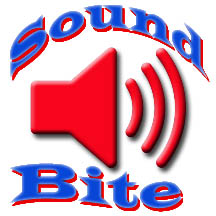Mohawk
The Mohawk people were known as the Keepers of the eastern door and for hundreds of years they guarded the Iroquois confederation against invasion by tribes from New England. Their native homeland was the valley of Mohawk in New York, north to the St. Lawrence River, south to greater New Jersey and Pennsylvania, and east to the Green Mountains of Vermont, and west to their border with the Iroquoian Oneida Nation.
Mohican
Mohicans are eastern Algonquian Native Americans, related to the Delaware peoples. Their native homeland in the upper Hudson River Valley, western New England centeren on Massachusetts and lower Vermont. The Mohican peoples were driven from their homes southeastwards in 1680 during the Beaver Wars.
Navajo
The Navajo are a Native American people of the Southwestern United States. The Navajo people are politically divided between two federally recognized tribes, the Navajo Nation and the Colorado River Indian Tribes.
Nez Perce
The Nez Perce or Niimiipuu in their own language, meaning “the walking people” or “we the people”, lived on the Columbian River plateau in the Pacific Northwest. They had a vast trade network from Oregon and Washington, the high plains of Montana, the northern Great basin, southern Idaho, and northern Nevada. They were the dominate people of the area especially after acquiring the horses that led them to breed the Appaloosa horse in the 18th century.
Omaha
The Omaha are a federally recognized Midwestern Native American tribe who reside on the Omaha Reservation in northeastern Nebraska and western Iowa, United States.
Osage Nation
The Osage Nation is a Midwestern Native American tribe of the Great Plains who historically dominated much of present-day Missouri, Arkansas, Kansas, and Oklahoma.
Otoe
The Otoe are a Native American people of the Midwestern United States. The Otoe language, Chiwere, is part of the Siouan family and closely related to that of the related Iowa and Missouri tribes.
Paiute
The Paiute Tribe of Utah was two Ute bands lived in the deserts near Sevier Lake of western Utah. They were later removed by the US government to the Uintah Reservation.
 Piute gambling song. 01:47
Piute gambling song. 01:47
Pawnee
The Pawnee are a Plains Indian tribe who are headquartered in Pawnee, Oklahoma. Pawnee people are enrolled in the federally recognized Pawnee Nation of Oklahoma. Historically, they lived in Nebraska and Kansas.
Pomo
The name Pomo meant “those who lived at red earth hole” referring to local deposits of red magnesite used for beads. The homeland of the Pomo was bordered by the Pacific coast to the west extending inland to Clear Lake.
Ponca
The Ponca are a Midwestern Native American tribe of the Dhegihan branch of the Siouan language group. There are two federally recognized Ponca tribes: the Ponca Tribe of Nebraska and the Ponca Tribe of Indians of Oklahoma.
Powhatan
The Powhatan people are traditionally known as Virginia Algonquians. It is estimated that there were about 21,000 Powhatan people in eastern Virginia when Jamestown was settled in 1607. Chief Wahunsunacawh created a powerful organization by affiliating 30 tributary people whos territory was much of eastern Virginia. Ongoing conflicts with the English settlements was the high rate of deaths the Powhatan suffered due to hew infectiour diseases brought there by the Europeans. Their ancestry is mostly from the Rappahannock tribe of Virginia and the related Nanticoke tribe of Delaware, and are recognized as a tribe of New Jersey.
Osage
Osage is French roughly translated as “warlike” a Midwestern Native American tribe of the Great Plains who historically dominated much of Missouri, Arkansas, Kansas, and Oklahoma. They had migrated west of the Mississippi due to wars with Iroquois searching for new hunting grounds. They depended on nomadic buffalo hunting and agriculture. They were the tallest race of men in North America many of them were six and a half and other seven feet tall.
>>to return to previous page – right click on back arrow <<
Word count: 640









































